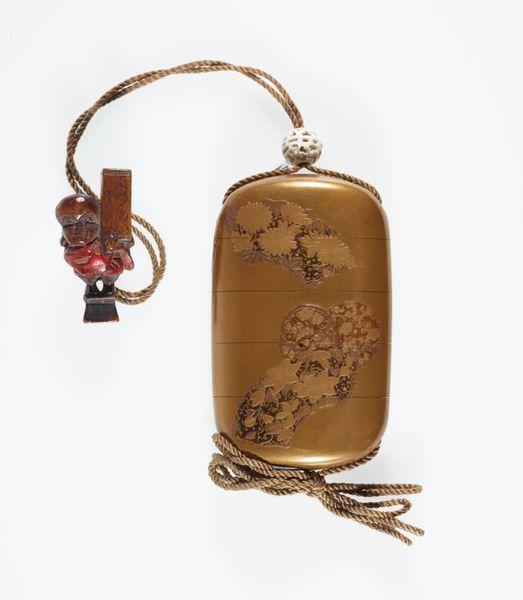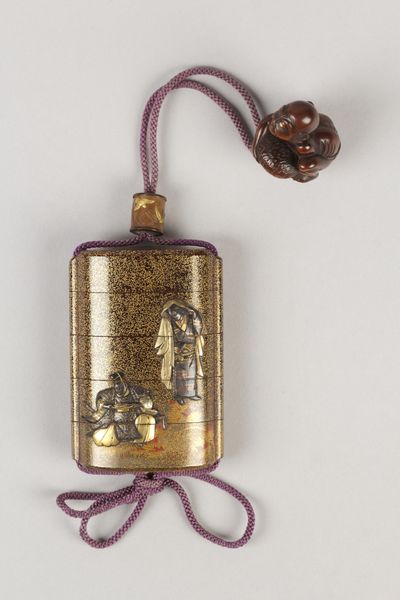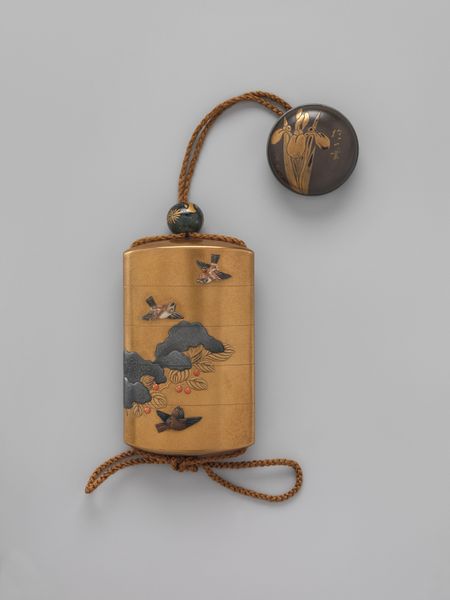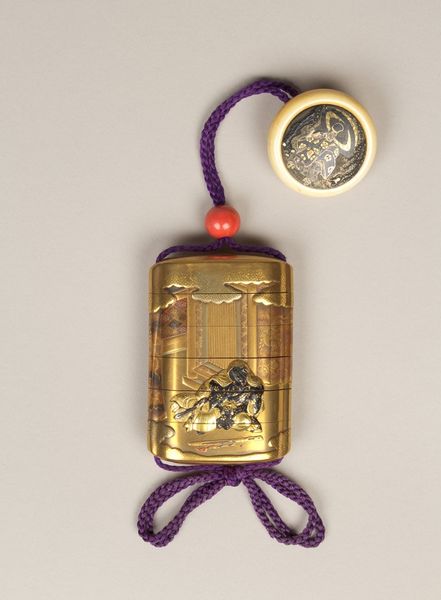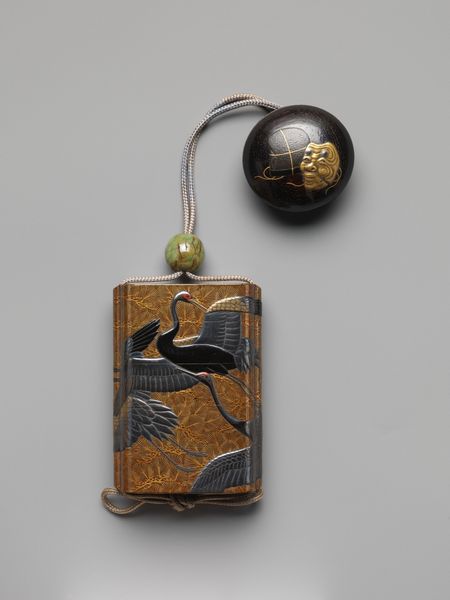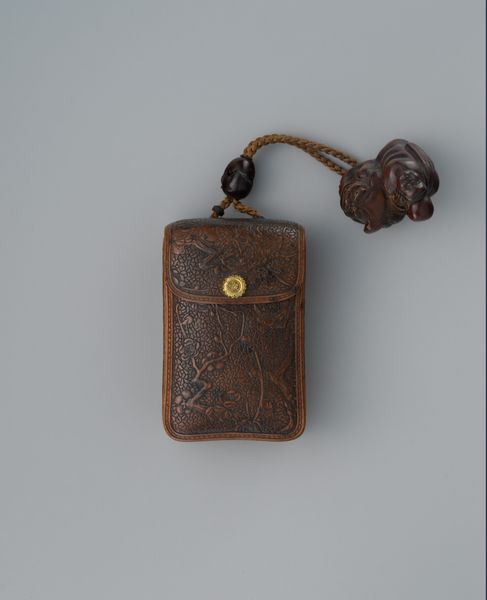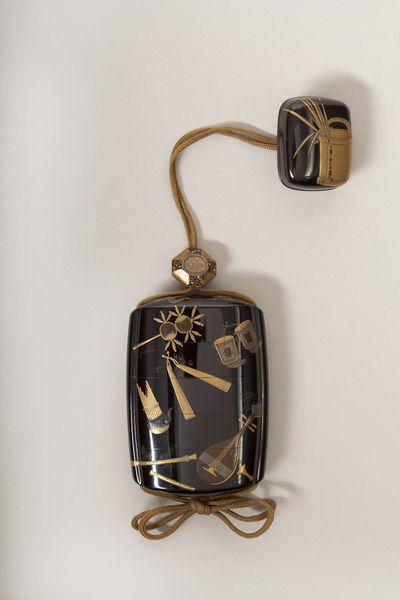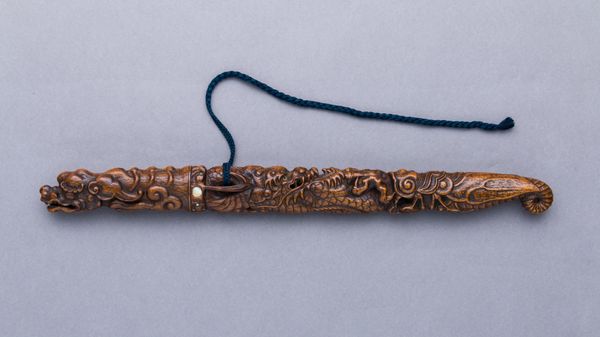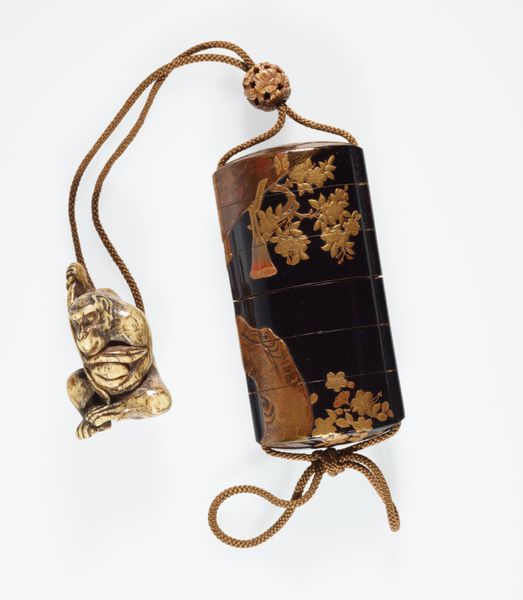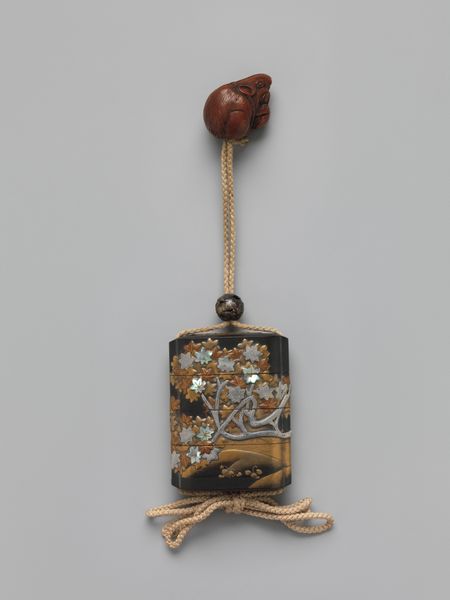
Inrō with Two Standing Horses; Seal and Inscription (reverse) 1734 - 1766
0:00
0:00
sculpture, wood, ivory
#
sculpture
#
asian-art
#
sculpture
#
horse
#
wood
#
ivory
#
miniature
Dimensions: 3 1/8 x 1 7/16 x 1 in. (7.9 x 3.7 x 2.5 cm)
Copyright: Public Domain
This Inrō with Two Standing Horses was produced in Japan in the mid-17th century by Kano Naonobu. An Inrō is a traditional Japanese case, often worn by men to carry small objects, such as seals or medicines. In feudal Japan, dress codes reinforced social hierarchies. With elaborate displays of personal wealth prohibited, the Inrō became a subtle yet significant expression of status and taste for the samurai and merchant classes. The artist Kano Naonobu, from the prominent Kano school, infuses the object with cultural meaning through symbolic representation of the horses. Horses in Japanese art often symbolize power, wealth, and the samurai class. To fully understand this piece, we need to consider the socio-political context of the Edo period. By looking at sumptuary laws, merchant guild records, and samurai family histories, we can more fully appreciate the significance of this Inrō as both a functional item and a cultural artifact that reflects the complex interplay between social norms, artistic expression, and personal identity.
Comments
No comments
Be the first to comment and join the conversation on the ultimate creative platform.


